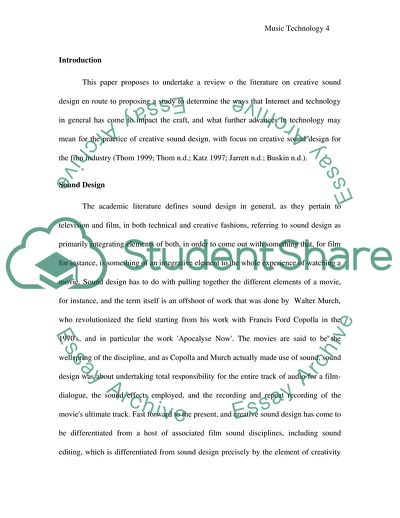Cite this document
(Sound Design for Movies Literature review Example | Topics and Well Written Essays - 2500 words, n.d.)
Sound Design for Movies Literature review Example | Topics and Well Written Essays - 2500 words. https://studentshare.org/music/1775422-music-technology-sound-design-for-the-moving-image
Sound Design for Movies Literature review Example | Topics and Well Written Essays - 2500 words. https://studentshare.org/music/1775422-music-technology-sound-design-for-the-moving-image
(Sound Design for Movies Literature Review Example | Topics and Well Written Essays - 2500 Words)
Sound Design for Movies Literature Review Example | Topics and Well Written Essays - 2500 Words. https://studentshare.org/music/1775422-music-technology-sound-design-for-the-moving-image.
Sound Design for Movies Literature Review Example | Topics and Well Written Essays - 2500 Words. https://studentshare.org/music/1775422-music-technology-sound-design-for-the-moving-image.
“Sound Design for Movies Literature Review Example | Topics and Well Written Essays - 2500 Words”. https://studentshare.org/music/1775422-music-technology-sound-design-for-the-moving-image.


